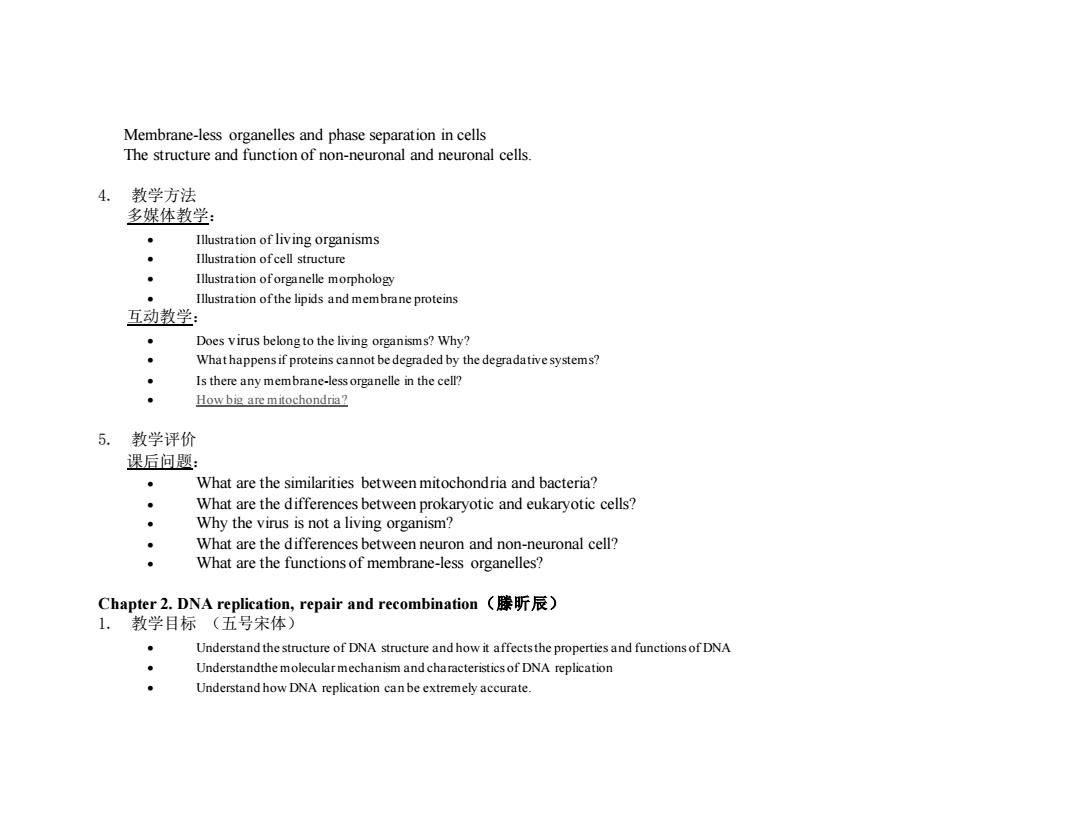正在加载图片...

Membrane-less organelles and phase separation in cells The structure and function of non-neuronal and neuronal cells. 4. 教学方法 多媒体教学: Illustration of living organisms Illustration ofcell structure Illustration oforganelle morphology Illustration ofthe lipids and membrane proteins 互动教学: Does virus belong to the living organisms?Why? What happens if proteins cannot be degraded by the degradative systems? Is there any membrane-less organelle in the cell? How big are mitochondria? 5.教学评价 课后问题: What are the similarities between mitochondria and bacteria? What are the differences between prokaryotic and eukaryotic cells? Why the virus is not a living organism? What are the differences between neuron and non-neuronal cell? What are the functions of membrane-less organelles? Chapter2.DNA replication,repair and recombination(滕昕辰) 1.教学目标(五号宋体) Understand the structure of DNA structure and how it affectsthe properties and functions of DNA Understandthe molecular mechanism and characteristics of DNA replication Understand how DNA replication can be extremely accurate.Membrane-less organelles and phase separation in cells The structure and function of non-neuronal and neuronal cells. 4. 教学方法 多媒体教学: • Illustration of living organisms • Illustration of cell structure • Illustration of organelle morphology • Illustration of the lipids and membrane proteins 互动教学: • Does virus belong to the living organisms? Why? • What happens if proteins cannot be degraded by the degradative systems? • Is there any membrane-less organelle in the cell? • How big are mitochondria? 5. 教学评价 课后问题: • What are the similarities between mitochondria and bacteria? • What are the differences between prokaryotic and eukaryotic cells? • Why the virus is not a living organism? • What are the differences between neuron and non-neuronal cell? • What are the functions of membrane-less organelles? Chapter 2. DNA replication, repair and recombination(滕昕辰) 1. 教学目标 (五号宋体) • Understand the structure of DNA structure and how it affects the properties and functions of DNA • Understandthe molecular mechanism and characteristics of DNA replication • Understand how DNA replication can be extremely accurate